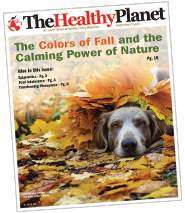by Dr. Ava Frick, D.V.M.
Yet another “wives tale” bites the dust. How many of you reading this today have a cat or dog that has had a dental exam? And how many times was that? What type of food does he/she eat? I would wager that 90% of you say your pet eats dry food. What is it that you have been told or heard on TV about feeding dry over canned or home-cooked or raw diets? Oh yes, that eating dry is better for their teeth. Now tell me, if that was the case why are there so many dogs and cats with poor dental hygiene, calculus, and gingivitis?
Fact is, there is very little even in the best of dry foods that is truly compatible with preventing any kind of a disease. Banfield Pet Hospital did a large survey with more than 2.5 million health records analyzed. They reported that, “preventable problems are on the rise.” This included conditions such as diabetes, ear infections, and obesity, with dental disease topping the list. 78 percent of dogs and 68 percent of cats over the age of 3 presented with some form of dental disease! And what is the common denominator? In my opinion it is the dry, highly refined, processed, corn, wheat, gluten, soy foods they are given as a “complete and balanced” diet. You can feed EXPENSIVE foods that contain these ingredients. Read your labels.
I have had eight year old dogs present for an evaluation who had been on raw diet all their life and they had the teeth of a two year old and never had a dental exam. I have taken animals with dental calculus, corrected the nutritional deficiencies, put them on a home cooked or dehydrated or canned or raw diet and in 6-9 months the mouth is amazingly improved to the point of not even needing a dental checkup! EVERTHING that goes wrong in the general health of your animal (or you for that matter), not including injuries, has a nutritional component. Nothing preserves wellness like whole food nutrition.
The American Animal Hospital Association in June of 2010 released the results of a consortium on nutritional recommendations. They say that “every patient visiting a veterinarian should have a nutritional assessment.” A complete nutritional assessment would include a Fur Mineral, Toxic Metal, and Oxidation Rate Analysis. This is painless and simple. It just requires the clipping of fur. Once the report is complete the next step is to balance the body with specific minerals and vitamins along with helping to chelate out any toxic metals.
A person using this approach can take 18 to 36 months to clear up but animals respond in half or less the time. Getting on the road to better health starts at the food dish. Take a bite out of dental disease other illness and degenerative conditions by putting some real nutrition back into your animal’s life.
Visit www.AnimalPainVet.com to get more details on what this is all about.
The Healthy Planet does not endorse any information contained in articles, advertisements or directory listings and we suggest consulting a health care professional before beginning any therapy or medical treatment.


